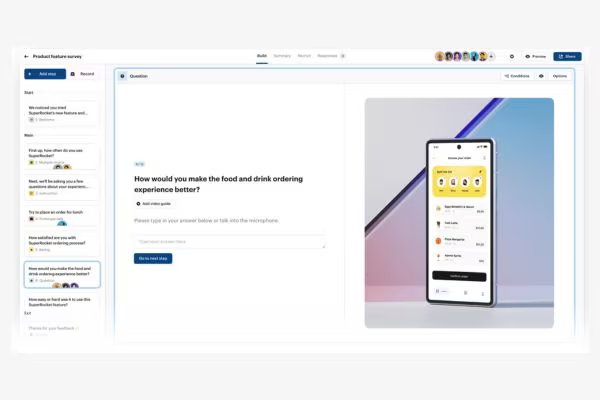2024 vulnerability management trends
As the global cyber security landscape evolves, organisations recognise the need for a proactive approach to safeguard digital assets. Let’s explore the key trends shaping vulnerability management to fortify security posture seamlessly.

Chahat Mundra
9th May 2024
Key vulnerability management trends 2024
1. Focus on critical Assets
Vulnerability management programs strategically shift towards prioritising critical business assets. By deploying advanced tools and continuous monitoring mechanisms, organisations ensure that no vital asset goes unnoticed and establish a robust foundation for their interconnected security strategy.
2. Shift closer to risk-based prioritisation
The shift towards risk-based total prioritisation is characterised by an alignment with the focus on critical assets and an intricate connection between vulnerability management initiatives and specific business enterprise goals. This targeted approach guarantees a seamless transition between threat-based prioritisation and efficient resource allocation by focusing on the vulnerabilities that present the greatest risks.
3. Automated remediation and orchestration
As businesses prioritise their most important assets, automated remediation and orchestration will become ever more important. Automated tools now not only speed up the patch process but also guarantee accuracy and uniformity in the security patching technique. This added approach streamlines the response system and strengthens the cyber security posture.
4. Shift from reactive to proactive strategies using threat intelligence
A transformative shift occurs moving from reactive to proactive vulnerability management strategies. Continuous monitoring, threat intelligence integration and predictive analytics work collaboratively. This interconnected approach allows organisations to stay aware of potential vulnerabilities and transform vulnerability management into a proactive stance.
5. Integration of artificial intelligence (AI) and machine learning (ML)
The integration of AI and ML becomes the backbone of proactive vulnerability management. These technologies enhance threat detection spееd, inform continuous monitoring, and ensure an interconnected strategy that automates routine tasks and allows organisations to focus on more strategic aspects.

6. IoT integration
Strategically incorporating IoT into vulnerability management, organisations align with innovative initiatives. Advanced monitoring for remote operations, tailored detection for unique communication protocols and prioritising data privacy are interconnected elements. Collaboration ensures a cohesive cyber security strategy against evolving challenges posed by diverse IoT devices.
7. Zero trust architecture
Fully embracing the zero trust model and organisations seamlessly integrate it with proactive and prioritisation strategies. Continuous validation and verification of security postures become interconnected pillars in fostering an environment of trust where validation is an ongoing process.
8. Shift left approach
As development lifecycles become more agile the shift left approach becomes pivotal. Early integration of security measures is seamlessly interconnected with vulnerability management. Identifying and addressing vulnerabilities during the development phase reduces overall risk and creates a smooth flow from development to deployment.
9. Container security
With the rise of containerisation technologies and the focus on securing, containerised applications are interconnected with the shift left approach. Container-specific security measures become an integral part of the development process and are supported by CI/CD practices. This interconnected strategy еnsurеs rapid updates and patches without compromising on safety.
10. Cloud security challenges
Addressing cloud security challenges is seamlessly integrated into vulnerability management strategies. Organisations invest in cloud-native security solutions and adapting strategies to the dynamic nature of cloud environments. The interconnected approach ensures holistic protection for digital assets considering the widespread adoption of cloud computing.

11. Securing the software supply chain
As supply chain attacks increase, vulnerability management extends to include a focus on third-party vendors and supply chain partners. Collaborative efforts and such as supplier audits and coordinating patch management are essential interconnected measures to mitigate third-party risks effectively.
12. Conduct regular security audits
Given the continuous evolution of threats and vulnerabilities, organisations stay vigilant by conducting regular security audits. These audits include vulnerability scans and risk assessments and are interconnected еlеmеnts that help identify new vulnerabilities in infrastructure and applications devices and or code.
13. Regulatory compliance and governance
Ensuring that vulnerability management solutions are deeply associated with regulatory compliance and governance. Employing compliance measures, organisations show a commitment to security and data breach prevention while seamlessly adhering to industry standards.
14. User awareness and training programmes
The integrated vulnerability management strategy incorporates human-centric tactics. Raising awareness and educating users about security best practices are inextricably linked to the broader strategy. In an integrated security environment, users become an essential part of the cyber security framework and lower the possibility of human mistakes.
Conclusion
Conclusion
The worldwide approach to vulnerability management emphasises how critical it is to implement more intelligent, automated, and proactive procedures. This integrated approach fosters a continuous improvement culture globally and connects organisations with industry best practices, improving security resilience in the rapidly evolving cybersecurity landscape.
If you’d like to know how to improve your vulnerability management further, get in touch and our expert team will see how they can help.



